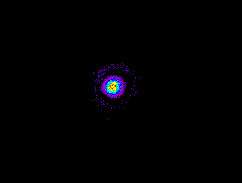Researchers violate Bell’s inequality with an atom and a photon

Researchers at the University of Michigan have reported the first Bell’s inequality violation measurement of a single entangled atom-photon pair.
Entanglement is a fundamental yet mysterious feature of quantum physics, said David Moehring, a physics graduate student who co-authored the paper entitled, “Experimental Bell Inequality Violation with an Atom and a Photon,” which appeared in Physical Review Letters this month.
Entanglement is a quantum mechanical phenomenon in which the quantum states of two or more objects must be described as a single inseparable entity, even though the objects may be spatially separated.
Quantum entanglement is demonstrated by inserting experimental results into a mathematical inequality called Bell’s inequality. If the results violate the inequality, entanglement has been demonstrated, and the results support the non-locality of quantum mechanics.
Non-locality means that even though particles are separated, they are considered one unit. When acting on one part you affect the other part instantaneously, as opposed to the amount of time needed for information to travel at the speed of light as is necessary.
The entangled hybrid system represents a step toward realizing quantum computing because of the way the two particles work together, Moehring said.
Ions can hold information for a long time, acting as storage, which is necessary to retrieve data from a quantum computer. Photons, on the other hand, travel extremely fast, and it is therefore very difficult to store a photon’s data. So, the photons represent the communication channel, and the ions represent the memory.
“We combined the two particles and we used the best that each had to offer,” said Moehring.
The recent paper advances research first published by physics professor Chris Monroe’s group, which includes Moehring, in the March edition of Nature. That paper discussed the first observation of entanglement of a photon and an atom.
For information on the trapped ion quantum computing lab, see: http: //iontrap.physics.lsa.umich.edu/
Source: University of Michigan


















